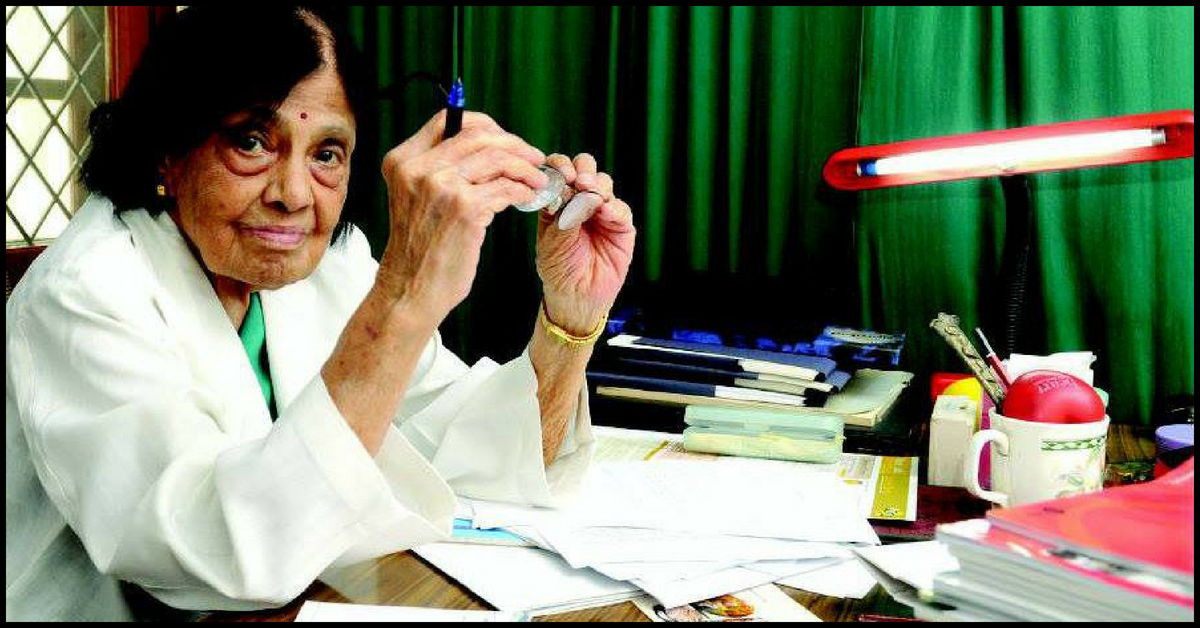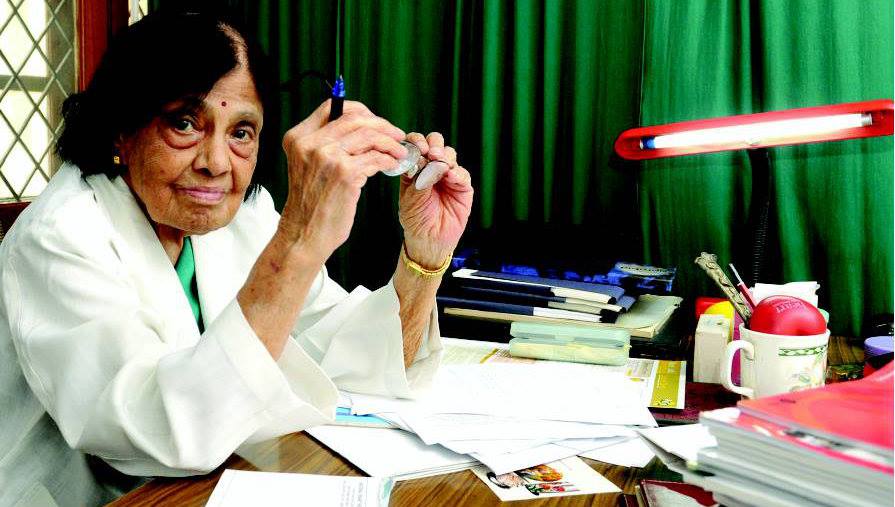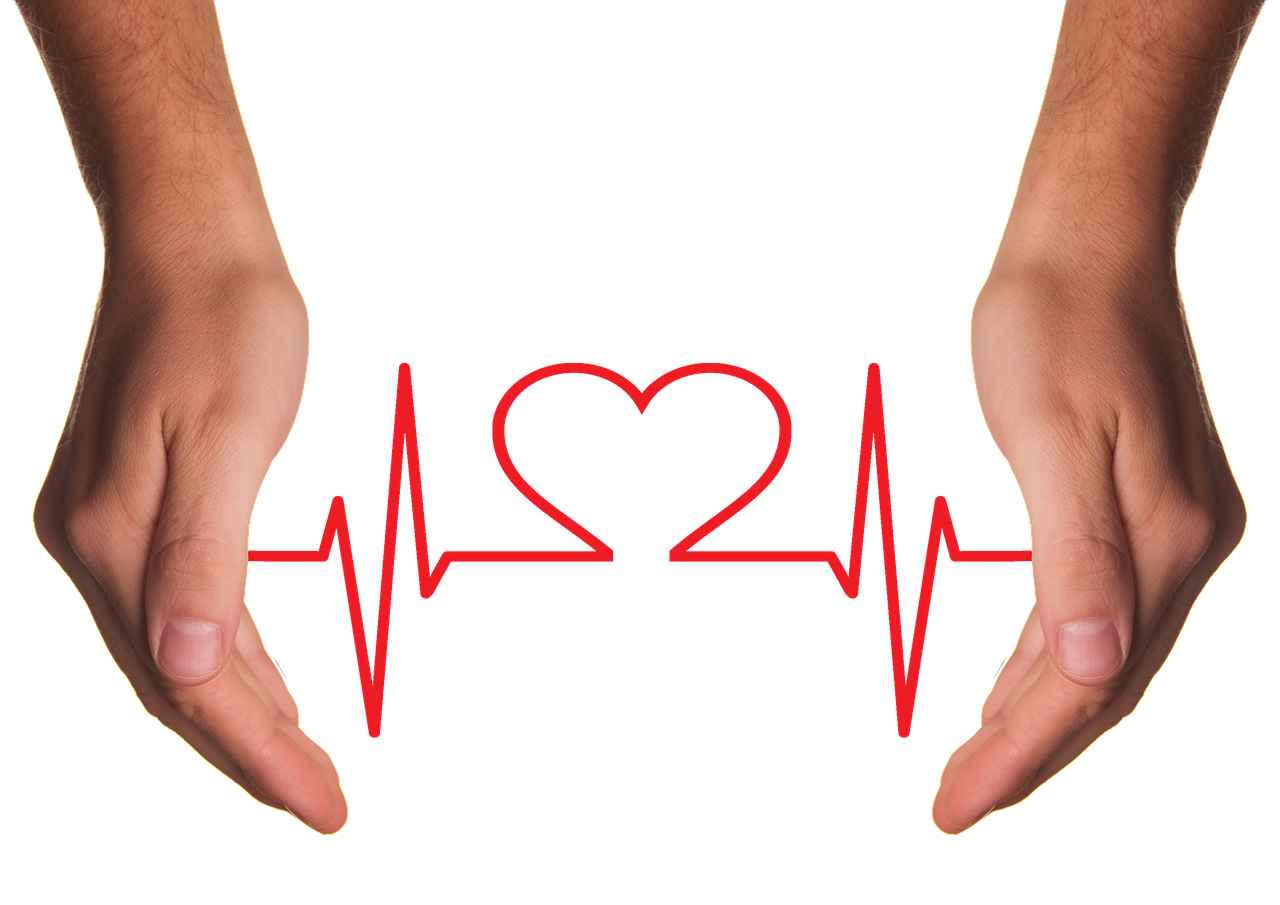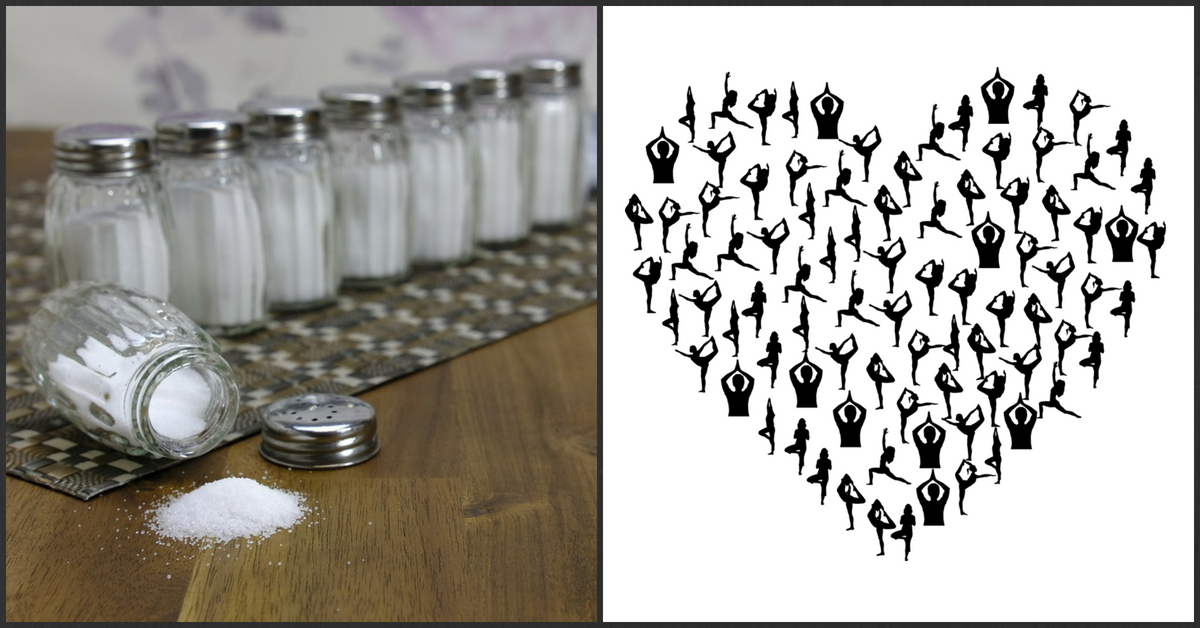A Woman of Many Firsts: Meet India’s First And Oldest Cardiologist!
Dr Padmavati was awarded the Padma Bhushan as well as the Padma Vibhushan for her pioneering work!

Health Heroes – This article is part of a series to celebrate some of India’s most amazing doctors and to understand the incredible work they are doing.
Stent, heart bypass surgery, heart attack…all of us have heard these painful terms amongst our loved ones at one time or another. But these were uncommon a generation ago.
So, what happened? How did we reach here?
In an attempt to understand the status of heart disease in India, Priyamvada Chugh reached out to India’s first and oldest cardiologist.
Meet Dr Sivaramakrishna Iyer Padmavati, who turns 101 this month, and still goes to the National Heart Institute in Delhi every day, which she founded in 1977.

Born in 1917, Dr Padmavati fled with her family from Burma to Coimbatore in 1941 during World War II. With the passion to make a difference, she studied medicine at Johns Hopkins Hospital and Harvard Medical College in the USA with cardiology pioneers Dr Helen Taussig and Dr Paul Dudley White, respectively.
While returning to India in 1952 was a personal decision, it was the turning point for cardiology in India.
She has been the face behind several firsts:
- The establishment of the first cardiac clinic and cath lab at the Lady Hardinge Medical College, Delhi.
- The initiation of India’s first Doctorate of Medicine in Cardiology.
- Setting up cardiology departments at the prestigious Maulana Azad Medical College, GB Pant Hospital, etc.
- Founding the All India Heart Foundation, Delhi.
The list goes on. She accomplished all this in an era when cardiology was an unknown territory for most Indians, let alone for a woman.
To this Dr Padmavati says, “I pursued cardiology because there were very few courses available to women when I went to college, unlike today.” She was honoured with the Padma Bhushan in 1967 and the Padma Vibhushan in 1992 for her contributions to the field.
Having witnessed drastic changes in the incidence of heart disease in India over the last century, she says “Things were different earlier. Physical activity and a healthy diet were the norms. Now, times have changed.”
Also Read: TBI Blogs: Do You Think Diabetes or Heart Disease Is A “Genetic Problem”? You Need to Read This!
Burgers, fast food, and buttered paranthas, with eight hours of sitting in front of a computer, aren’t making things any better. As we move towards a machine-driven lifestyle characterised by increasing levels of stress, we invariably embrace unhealthy nutritional habits where heart diseases will only be on the rise.
Diseases of the heart have become the biggest killers of the modern times. According to reports from the World Health Organisation (WHO), heart diseases kill 17 million people around the world every year, and this figure is expected to rise to 23 million by 2030. The numbers are as horrific in India where 32% of all adult deaths are due to heart diseases.
Worryingly, heart disease in Indian youth is increasing rapidly, with 50% of all heart attacks occurring under 50 years of age and 25% occurring under 40 years of age.

So, what causes heart disease? Dr Padmavati answers, “The biggest reasons for heart disease are obesity, hypertension, diabetes and tobacco abuse.” High level of blood cholesterol is a common sign among obese people. Being a bad fat, cholesterol tends to get deposited in blood vessels, making them thinner and causing an increase in blood pressure, which weakens the heart.
Similarly, high salt intake also leads to increased blood pressure and eventually heart failure. Guidelines from the WHO recommend getting no more than 2.3 g of sodium a day, which is just one teaspoon of salt! As Indians, we are consuming almost twice that amount per day!
Another red flag for heart disease is high blood sugar, which gets converted to fat by the liver, raising the risk of heart disease. The American Heart Association suggests that we should consume less than 36 g of sugar per day, which is equivalent to just a single serving of a Rasgulla!
Can you imagine how many times the daily requirement of salt and sugar you have already consumed today? Studies show that exercising as little as 30 minutes every day decreases the risk of heart disease by up to 30%.
Limiting the intake of sugar and salt and increasing physical activity is the only way forward.

Another recommended strategy to strengthen our heart is by having at least 500 g of antioxidant-rich fresh fruits and vegetables such as tomatoes, pomegranates, spinach, grapes, etc. daily.
Several campaigns across the globe have been fighting these risk factors to reduce the incidence of heart disease. For instance, the Daily Mile Scheme, initiated in Scotland, is ensuring 15 minutes of morning run for school students across Europe. Norway has hiked the tax on sugar by 83% at the start of 2018, with products like candies and chocolates being taxed at almost $5 per kilo. In Finland, low-salt food options in the supermarket carry a “better choice” logo, and high salt foods have a mandatory warning sign.
You May Also Like: How Millets Can Help Prevent Diabetes and Heart Disease While Saving the Indian Farmer!
In India, we neither have a sugar tax, nor a policy on salt consumption. So, for us Indians who worship food and love after-meal naps, it is time that we adopt something like Namak Cheeni Kam aur Exercize Zyada, karo apne Heart se ye Vaada (cut down your intake of sugar and salt and increase your exercise, make this promise for your heart).
(Edited by Shruti Singhal)
Like this story? Or have something to share? Write to us: [email protected]
Connect with us on Facebook and Twitter.
NEW: Click here to get positive news on WhatsApp!
If you found our stories insightful, informative, or even just enjoyable, we invite you to consider making a voluntary payment to support the work we do at The Better India. Your contribution helps us continue producing quality content that educates, inspires, and drives positive change.
Choose one of the payment options below for your contribution-
By paying for the stories you value, you directly contribute to sustaining our efforts focused on making a difference in the world. Together, let's ensure that impactful stories continue to be told and shared, enriching lives and communities alike.
Thank you for your support. Here are some frequently asked questions you might find helpful to know why you are contributing?


This story made me
-
97
-
121
-
89
-
167














